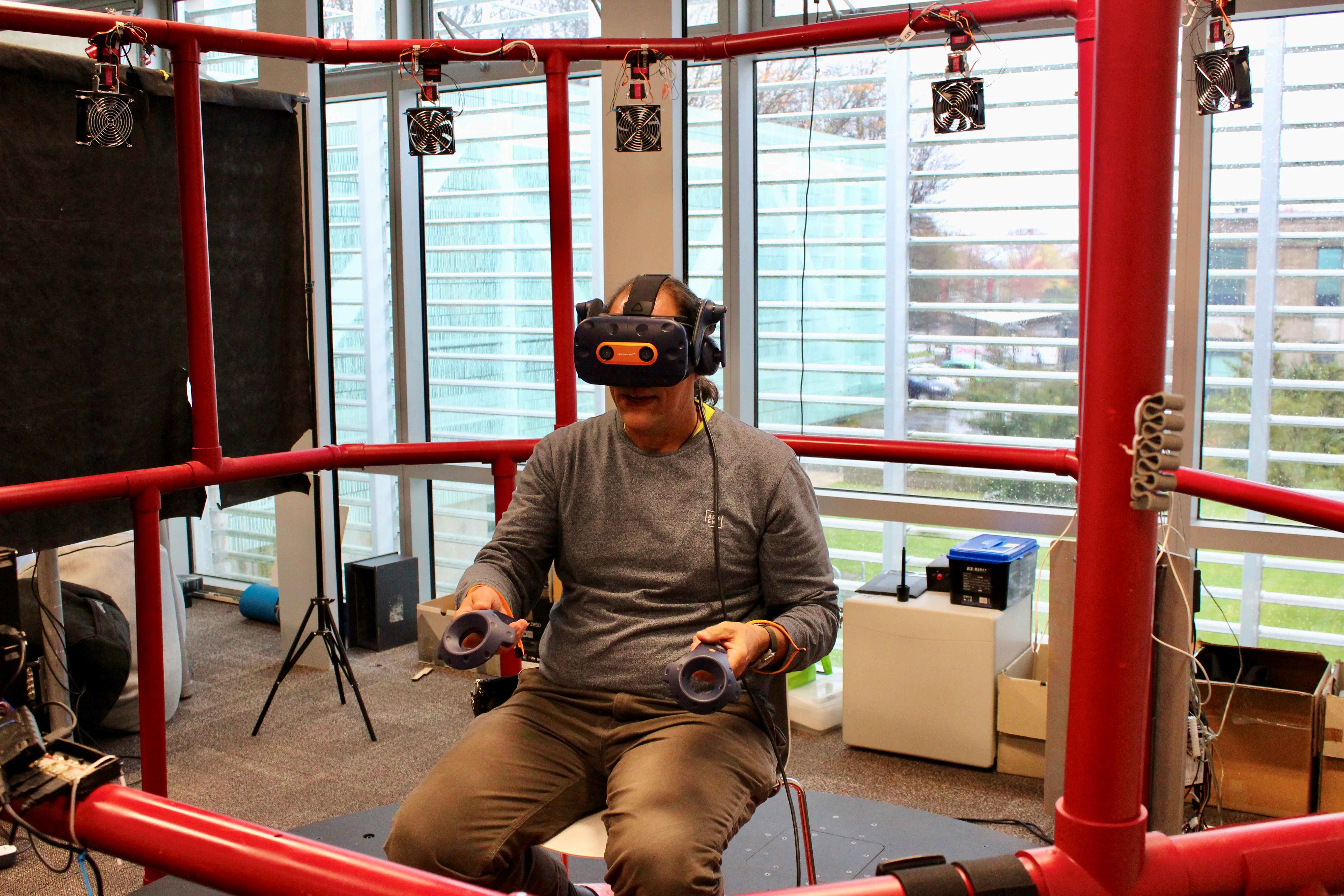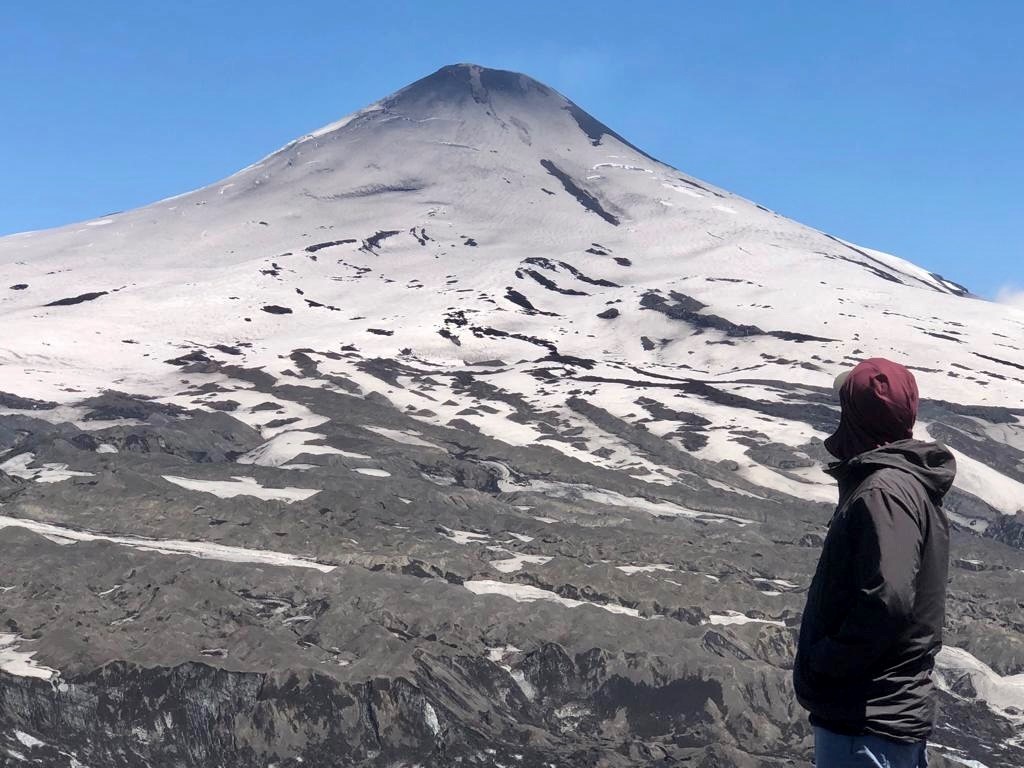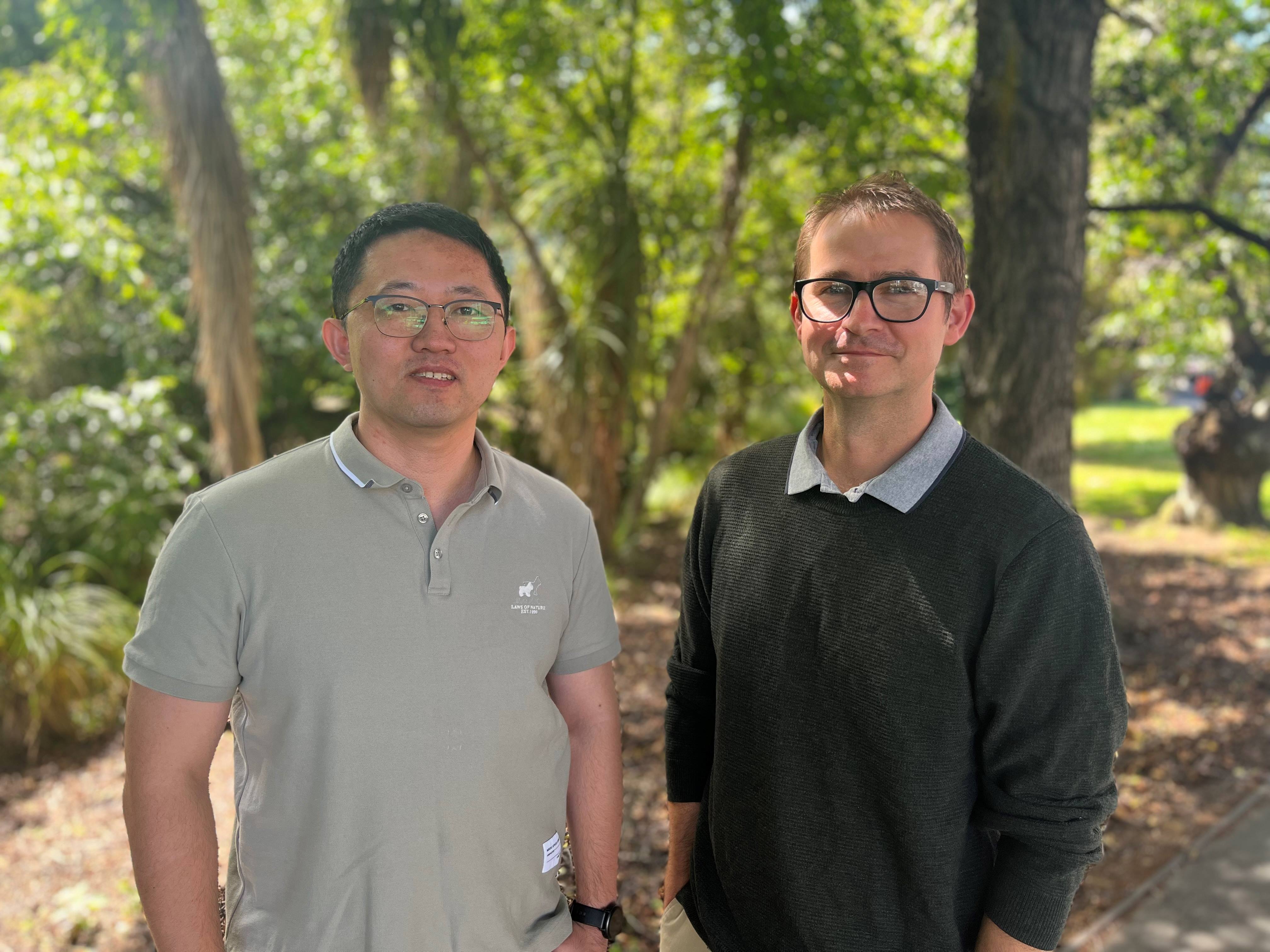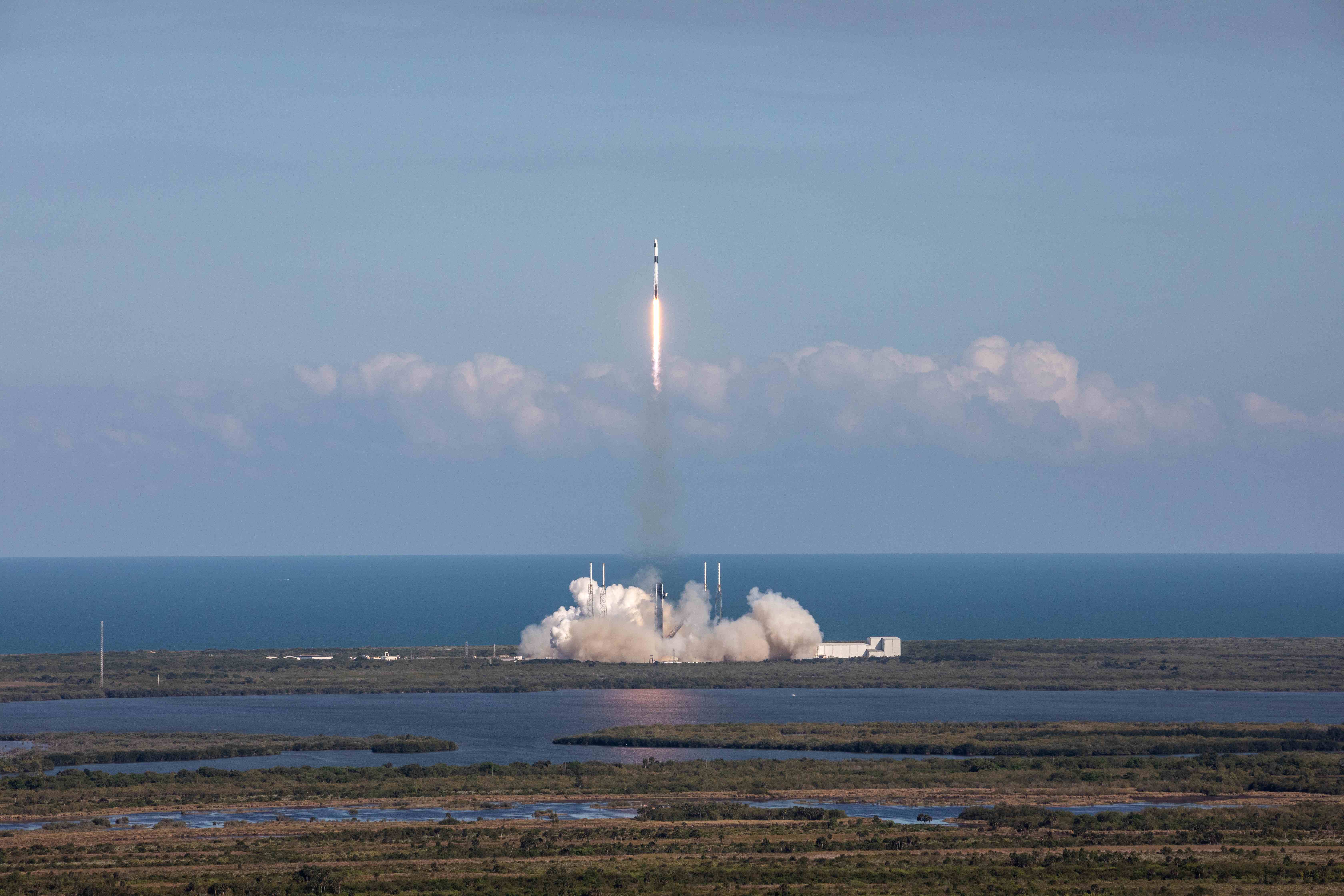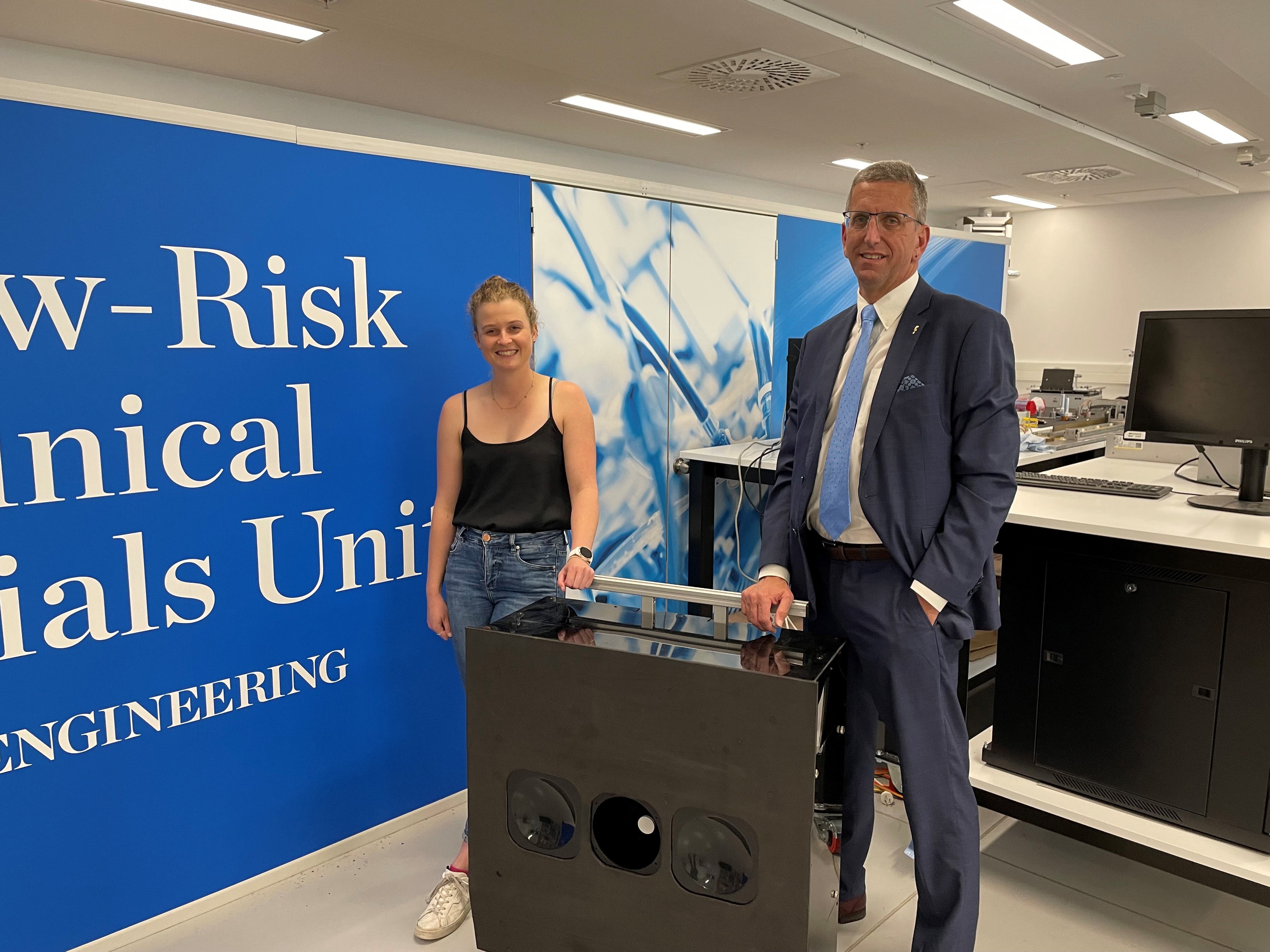Meet the World’s Smallest Kiwi: a miniscule kiwi that’s so small you can’t even see it with a magnifying glass.
But wait: isn’t that it sitting beside the dollar coin? In fact, the World’s Smallest Kiwi is that tiny speck of what looks like dust that’s beside the small kiwi sitting beside the dollar coin.
Te Whare Wānanga o Waitaha | University of Canterbury (UC) nano researcher, Associate Professor Volker Nock, is the brains behind the World’s Smallest Kiwi. He used a Nanoscribe Photonic Professional GT2, one of the world’s highest resolution 3D printers, to create two versions: a millimetre-sized kiwi that’s visible to the naked eye and a micrometre-sized sibling that can only be seen through a superpowered scanning-electron microscope.
“This printer makes it possible to print features as small as 160 nanometres – a thousand times smaller than a human hair,” Nock says. “I always had an idea of what I wanted the kiwi to look like, but it wasn’t until I saw it come off the printer that I realised how much detail I’d been able to include.”
To the naked eye, the World’s Smallest Kiwi looks like it’s a tiny speck of dust that could easily disappear into the ether by an ill-timed sneeze. But under a high-magnification microscope, you can see the nano kiwi’s intricately designed feathers, wings, claws, even scales on its legs.
“As an “imported” Kiwi myself and a keen tramper, I have always been very fond of our native birds, but at the same time, very aware of the troubles they are facing.
“Helping to raise awareness is the least I can do and I would have loved to print all of our iconic birds, but the kiwi is New Zealand’s national icon plus it has the best 3D models available, so it was an easy choice.”
The Nanoscribe Photonic Professional GT2 can print things in three dimensions at a very high level of detail, at a size not visible without a microscope. It uses laser light to harden a tiny volume, called a voxel, of a liquid plastic. By repeating this for billions of voxels, almost any 3D shape can be created. Any remaining liquid is washed away, leaving behind microscopic objects such as the World’s Smallest Kiwi.
Nock says the development of the World’s Smallest Kiwi has been an exciting and innovative project to work on.
“Nanotechnology is still quite a small industry in New Zealand, but it’s a developing art that UC are excited to be experimenting with,” he says. “Working on this project to create the World’s Smallest Kiwi has been an important scientific development in local nanotechnology and the ability to support Save the Kiwi and the conservation of real-life kiwi at the same time has been a very special added bonus.”
The World’s Smallest Kiwi is on display at Tūranga, the Christchurch City Library from 7-14 November. It will be auctioned as part of Save the Kiwi’s Kiwi Art Trail, and funds raised will go towards Save the Kiwi and kiwi conservation.
For more information about the Kiwi Art Trail auction, visit www.kiwiarttrail.nz/auction.


